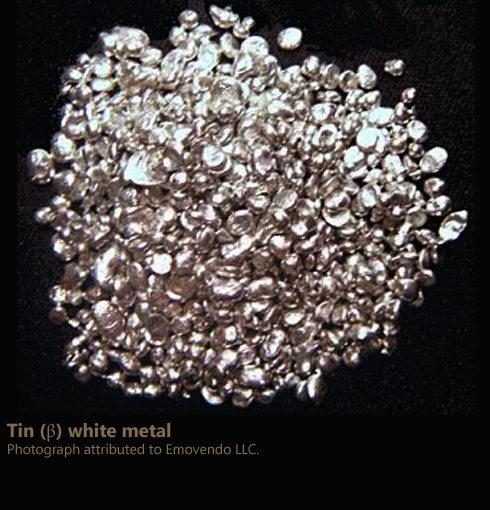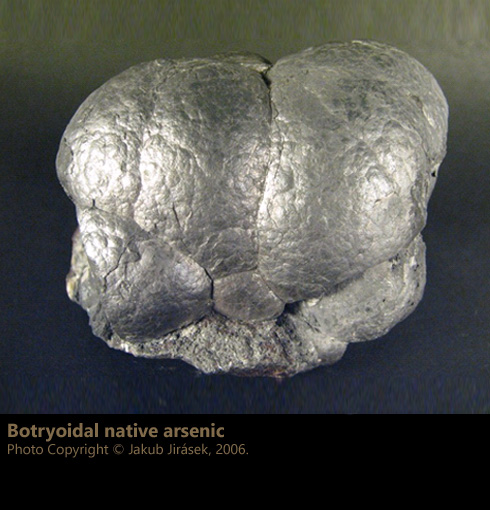More on Metals
The copper alloys under consideration are only those used for casting figurines and statues. There are many other types of copper alloys used in industry, which are designed to have specific physical properties by adding other elements including aluminium, nickel, manganese, phosphorus and silicon. So why are alloys used? Pure copper is ductile and malleable, but even small additions of other metals can improve its castability and hardness. When the first native metals or their ores were found and smelted, they probably were not pure. In other cases metals would be mixed. Over the centuries, artesans would discover that some mixtures were better than others. Copper ores containing arsenic, when smelted, had improved castability and hardness. However, in time, this may have been recognized as a health risk from the fumes. Initially tin and later zinc became the common choices for making alloys that were easier to cast and could provide better properties than pure copper for the purposes for which it was used. Lead may be present as an impurity, but in small amounts can improve the castability and machinability of bronze and brass.
When we look at a metal alloy casting, we usually see only the exterior patina. Only in the case of items that are frequently polished or coated with a clear lacquer, do we see the real metal surface colour. We can recognise a shiny yellow colour resembling gold as brass, a more reddish colour as bronze and a silver colour perhaps as pewter, because it is mostly made from tin. When the various alloys oxidise and react with atmospherically-borne chemicals they darken and form a natural patina. In the case of copper alloys this varies from brown to green. Most castings today are polished and treated chemically. Bronze is usually given a brown patina which, when protected from the weather and polished with wax, will remain shiny.
In addition to the panchaloha (five metals) alloy mentioned in the ancient Sanskrit texts, there is another, perhaps even more sacred alloy, called ashtadhatu meaning eight elements. This alloy is made from eight metals viz. gold, silver, copper, zinc, lead, tin, iron and mercury. It is interesting to look at what these component metals are like in their individual pure forms. In addition to the metals found in the ancient compositions, it is also interesting to look at the principal element added to copper for making bronze used in the casting of statues and artwork using modern methods and materials. This is silicon, a relatively recently identified metalloid, which is used to produce silicon bronze.
1. Copper Data for pure element
Data for pure element
Symbol: Cu
Element category: transition metal Atomic weight: 63.456
Specific gravity: 8.96
Melting point: 1084.62° C
Name history
In the Roman era, copper was mined on Cyprus, hence the Greek Κύπριος (Cyprios) meaning of Cyprus, and the original name of the metal сyprium, which was later shortened to сuprum giving the symbol Cu.
2. Tin Data for pure element
Data for pure element
Symbol: Sn
Element category: post-transition metal
Atomic weight: 118.710
Specific gravity (β): 7.365
Melting point: 231.93° C
Name history
The Latin name stannum (symbol Sn) may be derived from the Cornish word stean, since Cornwall was the main source of tin in the first centuries CE of the Roman era.
3. Zinc Data for pure element
Data for pure element
Symbol: Zn
Element category: transition metal
Atomic weight: 65.38
Specific gravity: 7.14
Melting point: 419.53° C
Name history
The Latin name zincum (symbol Zn) given to the metal by Paracelsus, the 16th century Swiss alchemist.
4. Lead Data for pure element
Data for pure element
Symbol: Pb
Element category: post-transition metal
Atomic weight: 207.2
Specific gravity: 11.34
Melting point: 327.46° C
Name history
The Latin name plumbum (symbol Pb), perhaps from the Greek word for lead μόλυβδος (molybdos).
5. Iron Data for pure element
Data for pure element
Symbol: Fe
Element category: transition metal
Atomic weight: 55.845
Specific gravity: 7.874
Melting point: 1538° C
Name history
The Latin name ferrum (symbol Fe), can be found in written Roman records at least as far back as the 2nd century.
6. Gold Data for pure element
Data for pure element
Symbol: Au
Element category: transition metal
Atomic weight: 196.966569
Specific gravity: 19.30
Melting point: 1064.18° C
Name history
The Latin name aurum (symbol Au), dating back to at least the 2nd century BCE and from Old Latin ausum perhaps of Sabine origin, the original root probably meaning yellow, shining.
7. Silver Data for pure element
Data for pure element
Symbol: Ag
Element category: transition metal
Atomic weight: 107.8682
Specific gravity: 10.49
Melting point: 2162° C
Name history
The Latin name argentum (symbol Ag), from Greek άργυρος (árgyros), from the Indo-European root arg-, meaning “white” or “shining”.
8. Mercury Data for pure element
Data for pure element
Symbol: Hg
Element category: transition metal
Atomic weight: 200.59
Specific gravity: 13.534
Melting point: -38.8290° C
Name history
The Latin name hydragyrum (symbol Hg), from the Greek ΰδραργυρος (hydrargyros), ΰδωρ (hydōr) = water, and αργυρος (argyros) = silver.
9. Silicon![]() Data for pure element
Data for pure element
Symbol: Si
Element category: metalloid
Atomic weight: 28.085
Specific gravity: 2.390
Melting point: 1414° C
Name history
Sir Humphry Davy proposed the name silicium from the Latin silex, silicis for flint and ending it –ium because it was thought to be a metal. Silicon was given its present name in 1817 by Scottish chemist Thomas Thomson, retaining part of Davy’s name but adding -on because he thought that was a non-metal similar to carbon. In fact it is not a true metal and is called a metalloid.
10. Arsenic Data for pure element
Data for pure element
Symbol: As
Element category: transition metal
Atomic weight: 74.92160
Specific gravity: 5.717
Melting point: 615 °C
Name history
The Latin name arsenicum from the Greek αρσενικόν arsenikon from the Syriac word ܙܐܦܢܝܐ zarniqa and the Persian word زرنيخ zarnikh, meaning yellow.
11. Antimony Data for pure element
Data for pure element
Symbol: Sb
Element category: metalloid
Atomic weight: 121.760
Specific gravity: 6.697
Melting point: 630.63 °C
Name history
The Latin name is stibium used by Jöns Jakob Berzelius, presumably from the Greek στίμμι stimmi, originating from the early Egyptian hieroglyphic sdm:![]()
The common name is from medieval Latin antimonium, possibly from the Greek ἀντίμοναχός antimonachos.